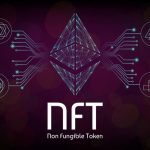Non-fungible token (NFT) market grew by 299% in 2020 to $250 million

Non-fungible token (NFT) is the craze these days. Even before NFT became popular at the beginning of this year, the NFT market grew by 299% in 2020 to $250 million, according to a new report by NonFungible.com, an NFT market analyst firm.
As we reported earlier, NFTs are digital art that represents a unique digital asset with ownership stored as tokens on the blockchain network. NFT assets can either be entirely digital assets or tokenized versions of real-world assets. Because NFTs are not interchangeable with each other, they may function as proof of authenticity and ownership within the digital realm, for example as proof of the authenticity of rare art.
The NFT frenzy is just beginning as celebrities and artists around the world are riding the NFT hype and cashing in millions of dollars. NFT artworks became mainstream about three weeks ago when Christie’s Auction sold digital artist Beeple’s NFT for a record-setting $69.3 million, making it the most expensive digital art ever sold. The digital art was reportedly sold to a crypto investor known only as Metakovan.
Now, a new report by NonFungible.com found that “The non-fungible token (NFT) market tripled in 2020, with the total value of transactions increasing by 299% year on year to more than $250m. Developed with support from foresight business L’Atelier BNP Paribas, the report – the third annual study of the NFT market – finds that NFTs are primed to become a leading emerging asset class for the Virtual Economy in the years ahead, both in terms of their financial value and their practical uses, and a major driver of economic activity in virtual worlds.”
However, as the NFT adoption grows, so is its impact on the environment. In our piece about why NFTs are harmful and bad for the environment, the vast majority of NFT tokens were built using one of two Ethereum token standards (ERC-721 and ERC-1155) which are also governed by various standard frameworks. Since NFTs are created on the Ethereum network, minting new NFT (NFT drop), uses the “Proof of Work” process which is the principal cause of high energy requirements.
The NFT article continued: “The report, which uses proprietary technology to track activity in the NFT market, found that the total value of all NFT transactions (which includes sales and all other transactions such as “breeding”, “minting” and renting) increased from to $62,862,687 in 2019 to $250,846,205 in 2020.
In addition, NonFungible.com also found that market activity has increased significantly: the total number of active wallets transacting NFTs (including buying, selling, holding, or using them in a blockchain application) skyrocketed, growing 97%, from 112,731 in 2019 to 222,179 in 2020. Similarly, the number of buyers and sellers rose from 44,644 to 74,529 (+66%), and 25,264 to 31,504 (+24%), respectively. The number of active wallets accelerated throughout 2020, suggesting even stronger growth ahead in 2021: Q4’s total growth was twice Q3’s, and three times that of Q2.”

